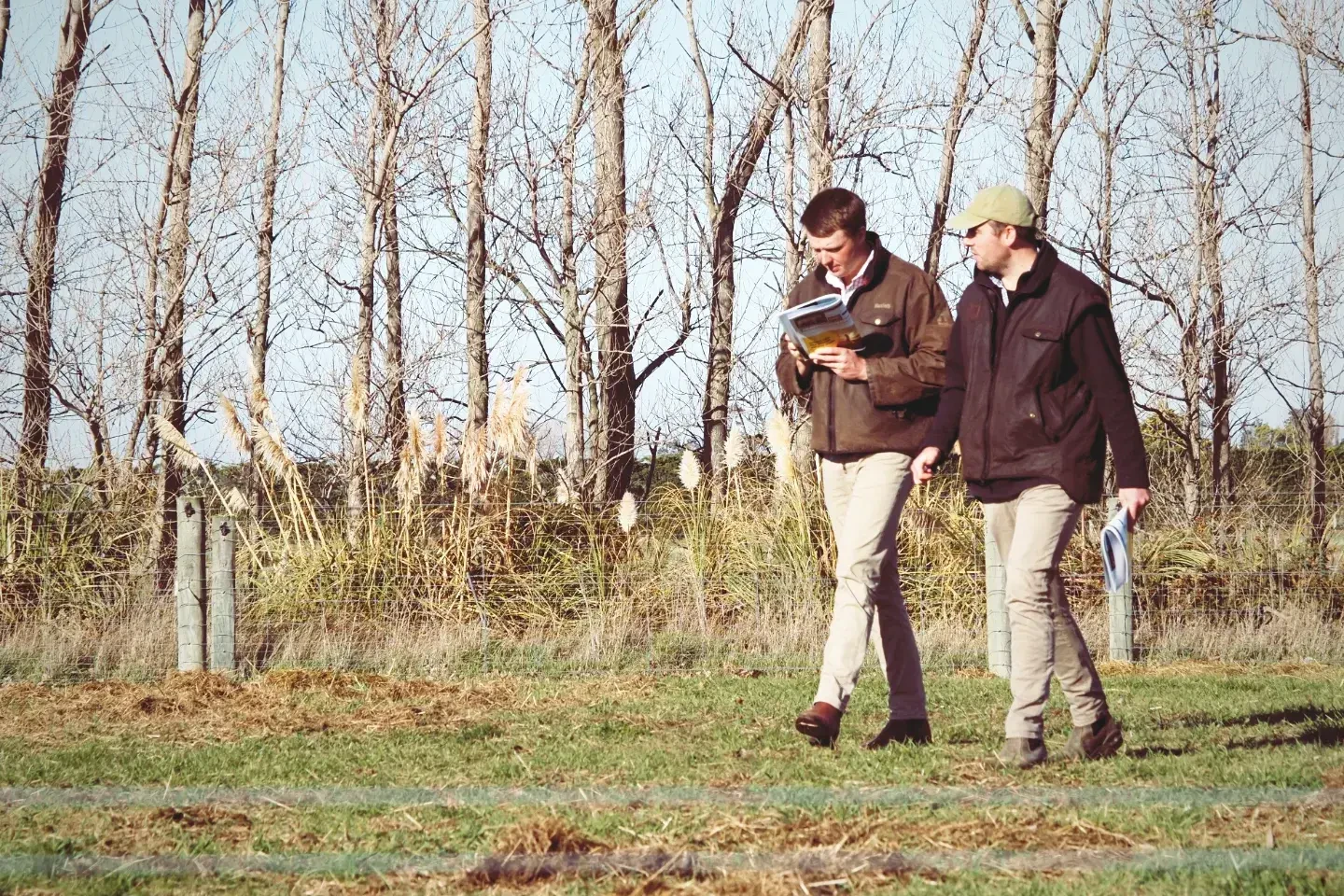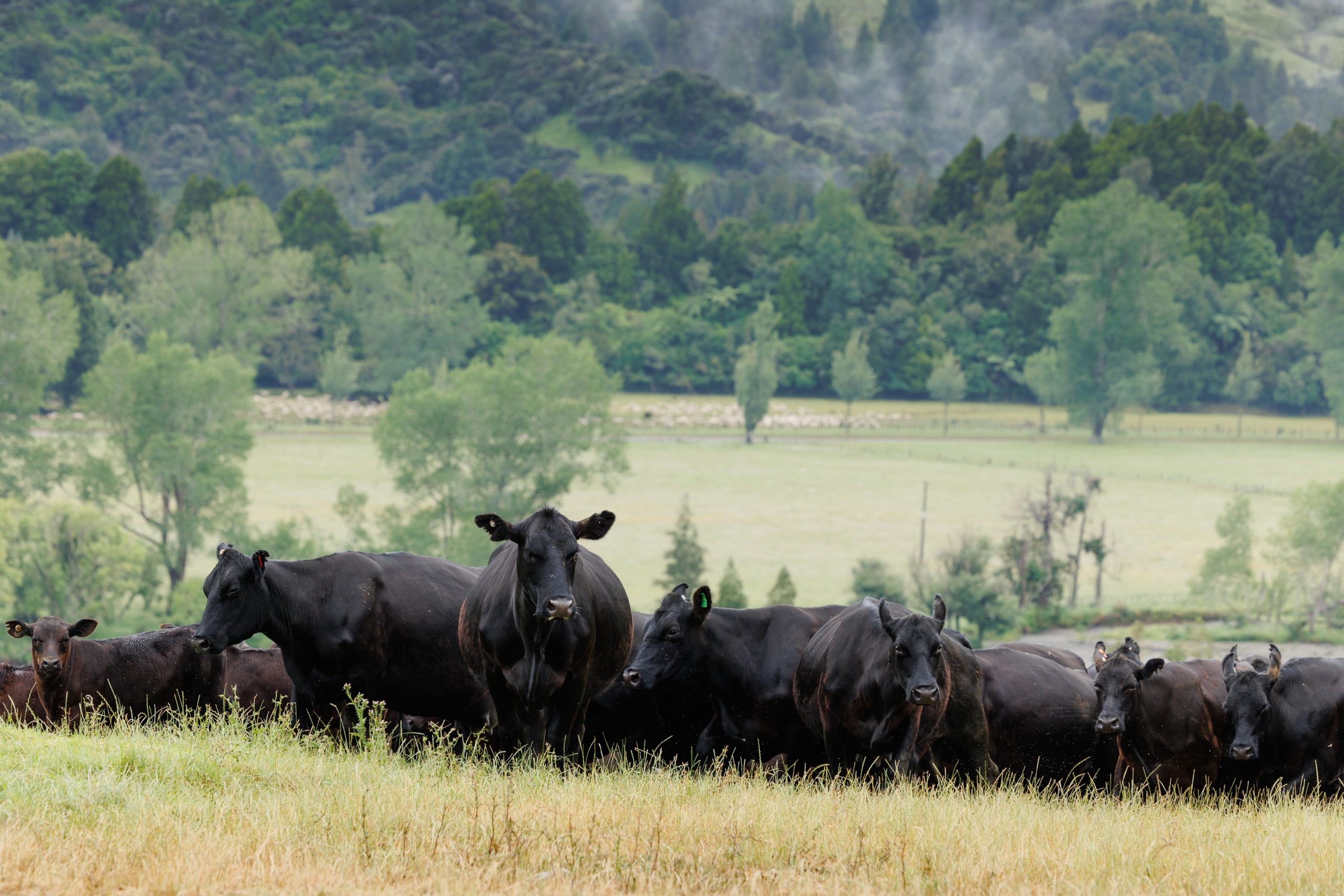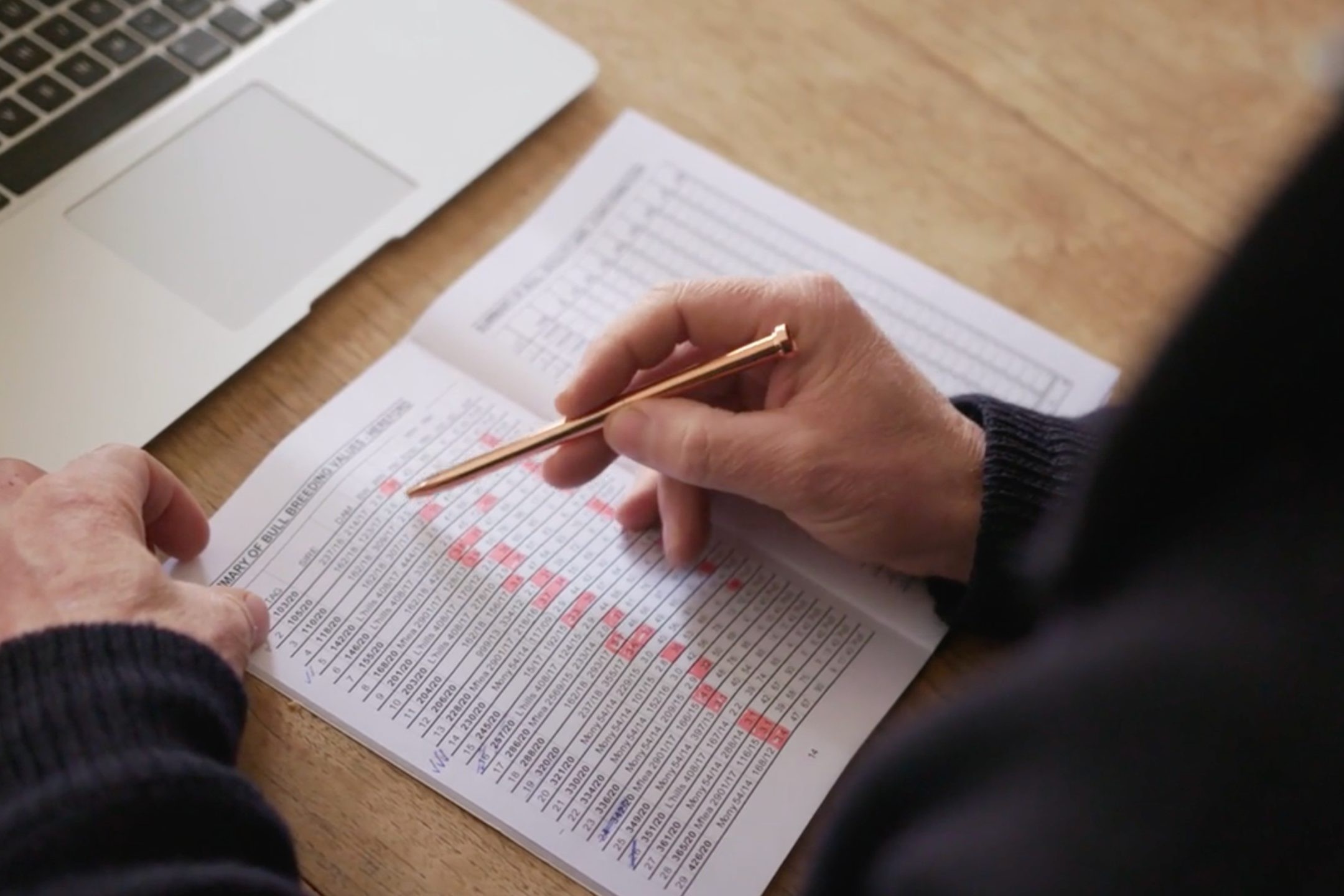Breaking out of the commodity rat race
Backgrounding with First Light Wagyu has allowed a Northland farmer to simplify his system. Words by Glenys Christian and Photos by Malcolm Pullman.

When Northland farmer Grant West takes delivery of weaner calves on his Tangiteroria farm he knows exactly how much he’ll be paid when they leave. While he’s been involved in First Light Wagyu for the last 10 years this is his second year as a backgrounder – taking calves from rearer through to finisher. And that’s allowed him to raise calf numbers from 200 to 300 as his farming system is simplified, from the previous three different age groups run on the 450-hectare (400ha effective) property. “The targets have to be met so I’m very much like a dairy grazer,” he says. “The day I buy the calves I know exactly what I’ll get in cents per kilogram when I sell them.”
And while that sounds attractive he warns the production system isn’t without its fish hooks, “but the product is phenomenal, the people are terrific and we’re all involved in doing something bigger than ourselves.”
Grant’s parents came on to the property as a Lands and Survey ballot farm in 1965 and ran a traditional sheep and beef system with 1200 ewes and about 80 beef cows. Following his time at Lincoln University Grant worked on farms and stations in Canterbury, Taihape, Taumarunui and Waikato, shepherding and tractor driving.
He came home in 1990 with plans to go sharemilking as a route to farm ownership, but the dairy payout crash of 1991 put paid to that. “Dairy heifers were cheap so we doubled up calves, then some land came up over the road,” he says. That 117 ha block, which was part of another Lands and Survey farm, had a house, round barn and woolshed on it.
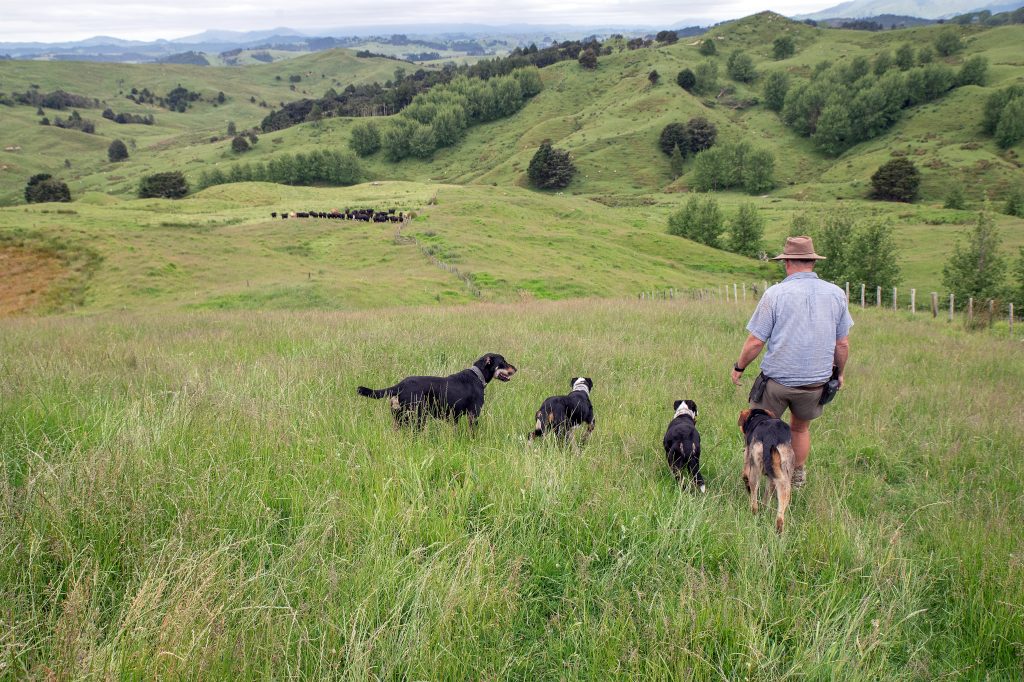
He and wife Christine (who he married in 1996) reared calves on cows for five years as well as running one-year ewes to a Suffolk ram. “I did some mustering as well,” he says. “Whatever turned a dollar.”
The two farms were amalgamated in a partnership with his father, Malcolm and mother, Joy in around 1995. Christine, whose parents farmed close by, is a registered nurse who works full-time for North Haven hospice, as a Kaitiaki Network Facilitator in the Whangarei and Kaipara areas.
Up to 1550 ewes were carried but that’s now dropped back to about 900. Romney rams are bought in from the Auckland Romney Group as well as Coopworths from Ashgrove Coopworths, with older ewes lambing from August 1 to terminals and the main mob a month later.
About 100 big Friesian bulls were run until last year. “It was great business, but I got sick of them trying to destroy me, my dogs and the farm,” Grant explains.
About 40% of the farm is hard hill country, just 10% is flats and the rest what he describes as broken Northland hill country. He started using a grazing system of half-hectare cells in eight-hectare systems. He has about 20 permanent systems with others built of sticks and string as required.
This way you can do a better job and it’s not as hard on the farm. I’m a long way from getting the recipe for backgrounding down pat but that’s a work in progress over the next two or three years.
The move to get involved with First Light Wagyu came about as he sought to see if he could break out of the commodity rat race. But he was initially reluctant to bring the breed on the property, not being sure the production system would work. “It’s not a farm that fits in with high-value table beef production,” he says.
But he was persuaded and started off with 40 then 80 head, which eventually reached 200. “In the early days I was feeling my way, but I’ve built up numbers over the last few years.”
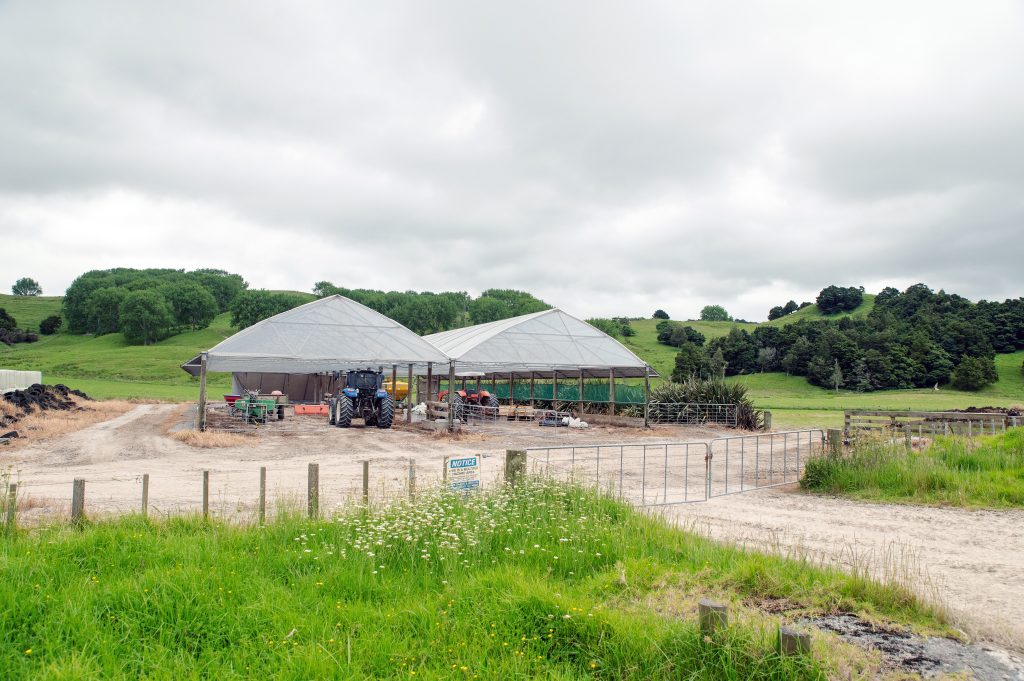
More recently he’s seen the advantage of a new scheme the company has come up with linking rearers, backgrounders such as himself and finishers. He’s part way through the two-year transition with some older stock still to be finished on the farm.
But from this year, 300 calves will come from Donnelly’s Crossing further north then after their time on his farm go to finisher John Blackwell at Arapohue, south of Dargaville.
First Light has more than 120 farmer shareholders running up to 16,000 cattle, with Grant particularly drawn to its ethos of looking after the land better. “We’re working on that all the time and walking towards it,” he says. “While some people still want to put their heads in the sand, our customers won’t let us.”
Under the manufacturing and commodity beef system farmers have to produce more kilograms per hectare, he says. “But this way you can do a better job and it’s not as hard on the farm. I’m a long way from getting the recipe for backgrounding down pat but that’s a work in progress over the next two or three years.’
“Can we earn a similar income by producing less for more? That’s the holy grail and I guess we’re going to find out whether we can do it or not.”
Farmax has the farm’s economic farm surplus (EFS) for this year at what he says is a fairly depressing $350/ha and $450/ha next year, when the backgrounding is fully up and running. It’s forecasting beef and lamb schedules staying very subdued for the next 18 months.
He “lives with scales” with stock so used to them he can leave gates open and they will come over them. The aim for the Wagyu is for heifers to reach 320kg in November and steers 420kg the following May. “That can be challenging to meet, but financially rewarding,” he says. “You’ve got to be on your toes all the time.”

Another downside is having to hold more feed in reserve – “there’s no free lunch”. That wasn’t an issue in 2023 with the yearly average of 1250mm of rain having fallen by the end of June and much more since – “don’t ask me to add it up”. In late spring, when Northland farmers are often looking down the barrel of a summer drought, he was able to make 480 big bales of silage – “a ridiculous amount”.
That will be fed to his calves over the summer, replacing maize he used to grow for silage. “A stack of maize is like a bad marriage – it looks good but is bloody hard to get away from once you start.”
He still runs 50 to 100 dairy beef yearlings, brought in at 100kg and usually traded within two years. “I’ll sell them in spring if the grass isn’t there,” he says. So total cattle numbers have gradually dropped from 740 head to 620. “I’ve got off the treadmill a bit and I can do the Wagyu properly,” he says.
He’s in his tenth year of using a 36 by 20 metre Herd Home which he says has paid for itself twice over. While he was initially keen to build a larger structure which would hold up to 200 cattle, consultants Chris Boom and Bob Thompson persuaded him to start at half that capacity which has proven to be “just enough.” Lanes leading to it mean he can put whatever stock he needs to into it, with them happy with the six square metres they’re each allocated, allowing him to reduce pugging damage to pastures and run the rest of the farm better. “Getting 100 big cattle off pasture sometimes is enough of a break,” he says. “It’s a relief valve, which is simple but it works.”
Back in July 2014 he lost half the roof covering after three days of more than 160km an hour north-easterly winds. And this year the whole roof needed to be replaced. “It doesn’t last forever but it costs only $1000 a year in maintenance.”
He feeds hay and silage to stock in the Herd Home, but with the benefit it gives in on/off grazing he’s able to utilise more pasture than previously. The farm is kikuyu-dominant with mulching carried out on the tractor country, and pasture renewal on up to 15ha of the flats. “It can be a crop of chicory, Pasja or Raphno and lambs or calves will be run on it depending on what I need,” he says. “The store market is non-existent at the moment so I’m going to have to finish my lambs on it.”
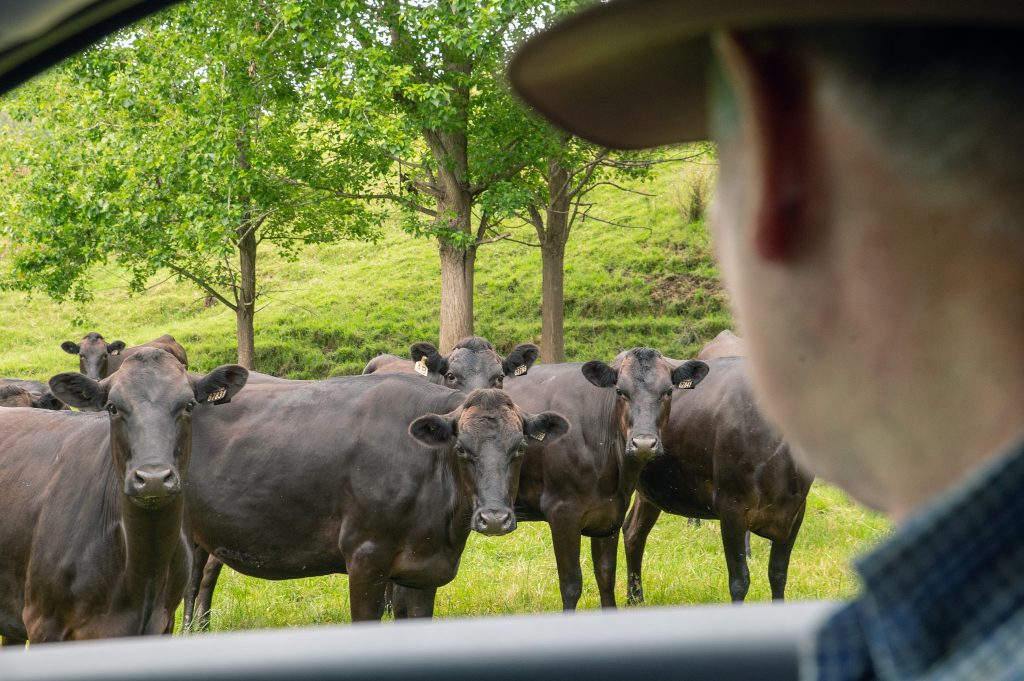
He’ll then plant a mix of persistent ryegrass with cocksfoot which does well on the farm. A super mix with lime and 25 to 50 units of sulphur goes on – “this farm eats sulphur”. It’s all flown on with Grant following his father’s reasoning that unlike ground spreaders, “they don’t leave a mess and they don’t leave gates open”. A dose of 30 units of nitrogen will be applied in the spring. Soil testing is carried out every couple of years with pH levels between 5.8 to 6 and Olsen P levels varying from the early 20s up to the late 50s.
The farm was hard hit by Cyclone Gabrielle with the biggest flooding he’d seen. “It beat Bola by metres,” he says. “There was slumping, but not too many slips.” However more than 100 large trees came down, mainly pines and poplars, which had been planted for erosion control. “Natives had very little damage and that alters your thinking about what you’ll plant in the future.” He’s continuing work that his parents started fencing off native blocks on the farm and plans to do more to add to bush areas. “There are still some dirty little gullies which it takes a long time to get five sheep out of.”
His son, Sean has worked on the farm for the last 18 months, already having his own dog and cattle. Older son, Ryan, works as a Ravensdown field rep in Canterbury and daughter, Briana, has just completed a business degree at Waikato University. Off farm Grant, who is on the Northern North Island Farmers Council, is very involved in dog trials, following in his father’s footsteps with he and his four dogs “sometimes doing not bad and sometimes not good.”
Farm facts
- Grant and Christine West, Tangiteroria, Northland
- 450ha (400ha effective)
- 300 First Light Wagyu calves taken from 100kg through to 320kg for heifers and steers to 420kg
- 50-100 dairy beef animals traded within two years
- 900 Romney-Coopworth ewes, lambing from August to September
- 100 Angus cows and progeny
- Pasture renewal with summer crop on 15ha, grass silage used over summer.

